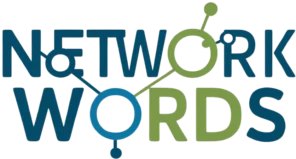How to Configure EIGRP Summarization in Cisco
How to Configure EIGRP Summarization in Cisco
Are you tired of managing complex network topologies with numerous routes? 🤔 Enhanced Interior Gateway Routing Protocol (EIGRP) might be the solution you’re looking for, but without proper configuration, it can still leave you overwhelmed. One powerful feature that can simplify your network management is EIGRP summarization.
Imagine streamlining your routing tables, reducing network overhead, and improving overall network performance with just a few simple steps. 🚀 In this blog post, we’ll dive deep into the world of EIGRP summarization, exploring both auto-summary and manual summarization techniques. We’ll guide you through the configuration process, help you troubleshoot common issues, and share best practices to optimize your network.
Whether you’re a seasoned network administrator or just getting started with Cisco devices, this guide will equip you with the knowledge to configure EIGRP summarization like a pro. Let’s begin by understanding what EIGRP summarization is and why it’s crucial for efficient network management.

Understanding EIGRP Summarization
A. Definition and benefits of EIGRP summarization
EIGRP summarization is a technique used to consolidate multiple specific routes into a single, more general route. This process significantly reduces the size of routing tables and minimizes the number of routing updates, leading to improved network efficiency and stability.
Benefits of EIGRP summarization include:
- Reduced routing table size
- Decreased network traffic
- Improved convergence time
- Enhanced network scalability
- Increased stability
B. How summarization improves network performance
Summarization enhances network performance in several ways:
- Reduced CPU and memory usage: Smaller routing tables require less processing power and memory.
- Faster route lookups: With fewer entries, routers can find the best path more quickly.
- Minimized bandwidth consumption: Fewer routing updates mean less network overhead.
- Improved stability: Summarization can contain network changes within specific areas.
| Aspect | Without Summarization | With Summarization |
|---|---|---|
| Routing table size | Large | Compact |
| Update frequency | High | Low |
| Convergence time | Slower | Faster |
| Network stability | Less stable | More stable |
C. Types of EIGRP summarization
EIGRP supports two main types of summarization:
- Auto-summary: Automatically summarizes routes at classful network boundaries.
- Manual summarization: Allows administrators to create custom summary routes at any point in the network.
Each type has its advantages and use cases, depending on the network topology and requirements. Manual summarization offers more granular control, while auto-summary can simplify configuration in certain scenarios.
Now that we’ve covered the basics of EIGRP summarization, let’s explore the prerequisites necessary for implementing this powerful technique in your network.

Prerequisites for EIGRP Summarization
Before implementing EIGRP summarization, it’s crucial to ensure that certain prerequisites are met. This preparation will help streamline the process and prevent potential issues during configuration.
A. Verify EIGRP Configuration
First and foremost, confirm that EIGRP is properly configured on all routers in the network. This involves:
- Checking EIGRP process ID
- Verifying neighbor relationships
- Ensuring all necessary networks are advertised
Use the following commands to verify your EIGRP configuration:
show ip protocols
show ip eigrp neighbors
show ip eigrp topology
B. Identify Summary Boundaries
Next, identify the logical boundaries where summarization should occur. These are typically:
- Distribution layer routers
- WAN edge routers
- Area border routers
Consider the network topology and traffic flow when determining these boundaries.
C. Gather Network Address Information
Collect detailed information about the network addresses that will be summarized. This includes:
- Subnet masks
- IP address ranges
- VLSM (Variable Length Subnet Mask) details
Use this information to create a table for easy reference:
| Network | Subnet Mask | IP Range |
|---|---|---|
| 192.168.1.0 | 255.255.255.0 | 192.168.1.1 – 192.168.1.254 |
| 192.168.2.0 | 255.255.255.0 | 192.168.2.1 – 192.168.2.254 |
| 192.168.3.0 | 255.255.255.0 | 192.168.3.1 – 192.168.3.254 |
D. Plan Summary Routes
Finally, plan your summary routes based on the gathered information. Consider:
- The most efficient summarization
- Potential impact on routing table size
- Effects on network convergence time
With these prerequisites in place, you’re now ready to move on to the actual configuration of EIGRP summarization, which we’ll explore in the next section.
Configuring Auto-Summary in EIGRP
Now that we understand the prerequisites for EIGRP summarization, let’s explore how to configure auto-summary in EIGRP. Auto-summary is a feature that can significantly reduce the size of routing tables and improve network performance.

Enable auto-summary feature
To enable auto-summary in EIGRP, follow these steps:
- Enter global configuration mode
- Access the EIGRP routing process
- Use the
auto-summarycommand
Here’s an example of the configuration:
Router(config)# router eigrp 100
Router(config-router)# auto-summary
Verify auto-summary effectiveness
After enabling auto-summary, it’s crucial to verify its effectiveness. Use the following commands to check the summarization:
| Command | Purpose |
|---|---|
show ip route | Displays the IP routing table |
show ip eigrp topology | Shows the EIGRP topology table |
show ip protocols | Verifies EIGRP configuration |
Limitations of auto-summary
While auto-summary can be beneficial, it’s important to understand its limitations:
- Only summarizes at classful network boundaries
- May cause routing issues in discontiguous networks
- Lacks granular control over summarization points
Given these limitations, manual summarization is often preferred for more precise control over route aggregation. In the next section, we’ll explore how to implement manual summarization in EIGRP for greater flexibility and efficiency in your network design.
Implementing Manual Summarization
Now that we’ve covered auto-summarization, let’s dive into manual summarization, which offers more control over route aggregation in EIGRP.
Choose appropriate interface for summary
Selecting the right interface for summarization is crucial. Typically, you’ll want to configure summaries on boundary routers between different areas or at distribution layer routers. This strategic placement helps to contain route information and reduce the size of routing tables in other parts of the network.
Configure IP summary-address command
To implement manual summarization, use the ip summary-address eigrp command on the chosen interface. Here’s the syntax:










